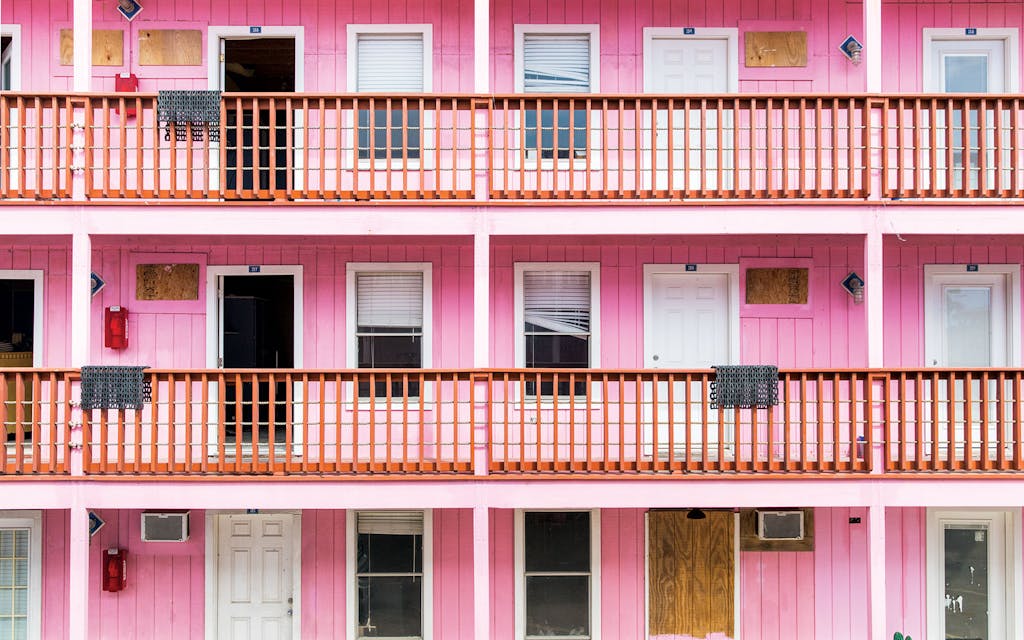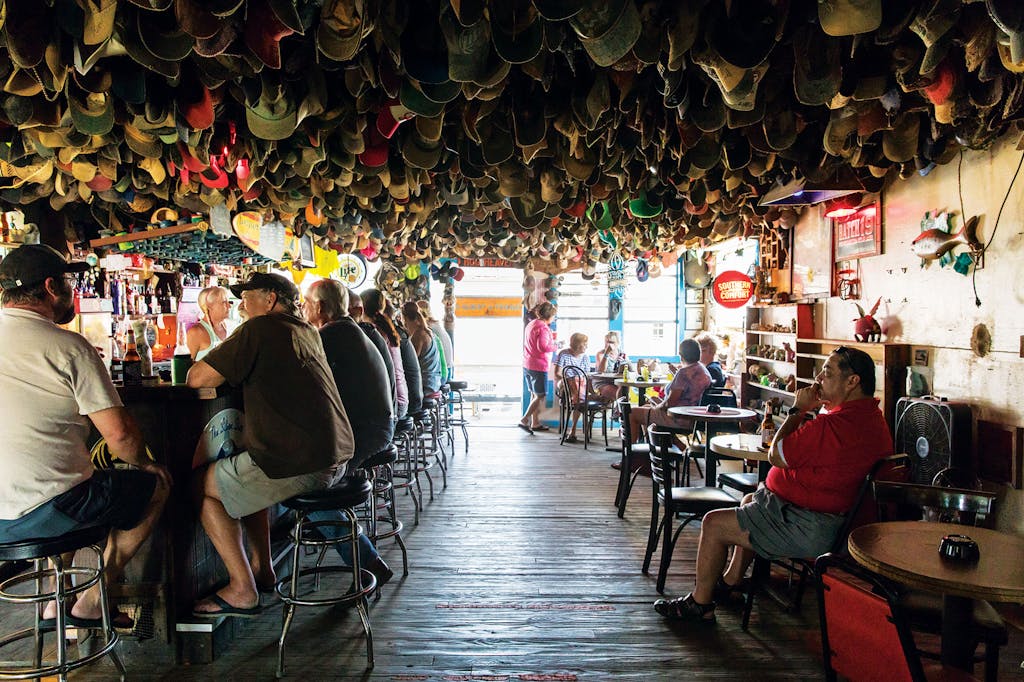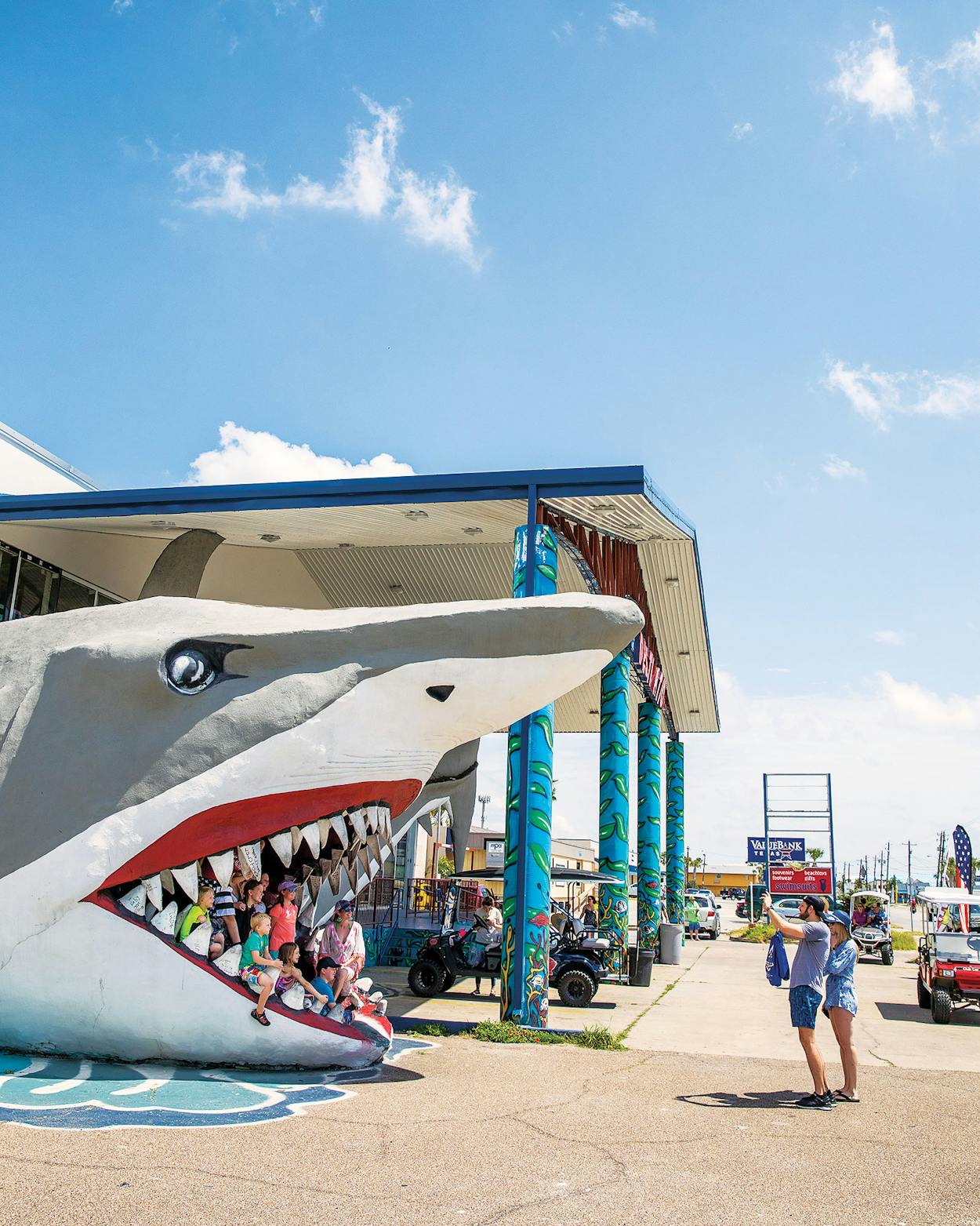The July 27, 2017, edition of the Port Aransas South Jetty was pretty much standard late-summer fare.
The IGA grocery store had helpfully compiled a list of supplies for the upcoming school year (“2 Boxes Crayola markers, fat”). Local celebrity Tony Amos, the English-born, white-maned bard of the beach and savior of wounded wildlife, would celebrate his eightieth birthday at an August 12 charity bash for his beloved bird-and-turtle-rescue facility, Amos Rehabilitation Keep (“Dress: Summer festive”). An alarming number of parents were losing track of their kids (“Police believe so many children go missing on the beach because everything looks the same in every direction”). And, according to the blotter, a 41-year-old San Antonio woman had been arrested after allegedly stealing a 32-ounce fountain drink from Stripes, defying the responding officers to shoot her, and blaming the whole contretemps on taking acid with “too much pickle juice and soda.” Over in the Letters to the Editor, an astute 29-year resident wearily addressed the ever-changing nature of a beach town: “Port A has grown and will continue to grow. The only thing that will slow it down is Mother Nature.”
Situated on the northern tip of Mustang Island, Port A is well acquainted with Mother Nature, as is any community that dares establish itself on terra not-so-firma. With a wary eye on the water, intrepid islanders long ago acclimated to the give-and-take of the coast, from the Karankawa’s partaking of its seasonal bounty to later residents’ long and fraught effort to corral the treacherous Aransas Pass. A brief perusal of the Port A timeline reveals a theme of boom and bust and a knack for reinvention.
Even its succession of names expresses an unflagging optimism and a courage to shift the sails when necessary. In 1888, residents christened the town Ropesville, for Elihu Ropes, an entrepreneur who promised the area’s first deepwater port (and never delivered). No doubt disenchanted with Mr. Ropes, they changed the name to Tarpon, in 1896, for the famed fighting fish that put the community on the map for sportfishing and tourism (and then subsequently cut out for calmer seas). Finally, in 1910, they settled on Port Aransas, a slightly misleading moniker meant to align the town with the development of an actual port, on nearby Harbor Island, and its job opportunities (short-lived, as it turns out, thanks to the 1916 and 1919 hurricanes and the 1926 arrival of a larger port, in neighboring Corpus Christi). Port A is no stranger to the vicissitudes of life, natural or man-made.


Mostly clear skies have blessed my frequent visits to Port Aransas, a sandy playground that draws hordes of tourists to its shores each summer (a mere 4.5 million visited in 2016). As a kid I rode the waves on a canvas float, dodged man-of-wars, collected sea beans and sand dollars, and tossed hunks of white bread to the seagulls, until, exhausted and hungry, I’d hightail it through the nonstop wind and stinging sand to the relative safety of my grandparents’ Coachmen fifth wheel. (I recently came across their 1976 planner and found, among entries like “Galvan Ranch—6 dove, 25 fish, good time,” a notation on the date of my fifth birthday, written in my grandmother’s flowy cursive, marking a family celebration at Aransas Pass.)
As an adult, I’ve spent hours reading in a canvas chair, enjoying salty dogs of both the canine and vodka variety, plucking shells from plastic detritus, dodging the occasional berms of putrefying sargassum, and sometimes hauling ass down the beach to catch an inadequately secured umbrella before it impales someone. And, on every trip, getting out of bed in the dark to walk the shore in the golden glow of sunrise. (Amid all this poetic waxing, I would be remiss not to mention that, as a grown-up, I’ve never been to Port A in the hottest part of the summer, when the town’s motto might as well be “Come for the heat, stay for the mosquitoes,” nor have I ventured into the ribaldry known as spring break for fear my sanctum of sea-kissed solace would never feel the same again.)
Port A has been an anchor for me, in happy times and sad. It’s where my best friend and I mourned the loss of her beloved dog and where, ten years later, she would take her new baby for his first beach visit and I would take my ailing pup for her last. It’s where I celebrated my upcoming marriage and mourned its end. It’s where my friends and I have navigated the ill winds blowing through our own lives over bottles of wine and late-night card games. So on my first visit back since Harvey, in early April, when one of those friends and I drove onto the ferry under a steady drizzle and a leaden sky, I felt uneasy and worried for a community I have no real claim to but feel protective of nonetheless. It’s hard to reconcile your place of escape with someone else’s temporary hell, a place where you’ve collected memories like seashells and they’ve lost everything associated with theirs.

On August 25, 2017, at around 10 p.m., Hurricane Harvey made landfall at San Jose Island, just across the pass from Port A. The first hurricane to hit the area in almost fifty years, Harvey moved leisurely along at two miles per hour, obliviously meandering here and there, dropping in and slipping back out, subjecting the town and the entire Gulf Coast to a relentless onslaught of wind and water and making an estimated $125 billion mess. In Port A, a warning of a tropical storm—a category 2 at most—had become a prediction of a category 3 in a matter of hours, prompting Mayor Charles Bujan to order a mandatory evacuation on August 24. After a seemingly interminable four days, residents were allowed to return and deal with the devastation wrought by the 130-mile-per-hour winds and 12-foot tidal surge of what had turned out to be a category 4. And then there were the insults upon injury that come with a natural disaster: loss of power, phone service, plumbing; chemical- and sewage-filled water; mold and rot; stifling heat and opportunistic mosquitoes. Although around seventy or so hardy souls couldn’t or wouldn’t evacuate, there was only one fatality, which may not have been directly related to the storm.
When my friend and I arrived eight months later, we still found plenty of evidence of a town that had been chewed up and spit back out, the path of destruction as capricious as any left by a so-called act of God. Many houses looked pristine, while others were flattened. Almost all of Port A’s businesses were damaged. The Black Marlin’s third-story bar was washed out to sea. Behringer’s Landing was a hollowed-out shell. The building that once housed the Pelican Club had collapsed into the harbor. Everywhere were plywood boards and blue tarps and staircases to nowhere; beached boats and dejected palm trees, their remaining fronds hanging limp, as if to signal surrender; scarred empty lots and mountains of debris that you couldn’t help but inspect, looking for something recognizable—a haphazard pile of cooking pots, a child’s mattress—in the remnants of someone’s life.
But also evident were the tireless sounds of repairing and rebuilding, the island’s usual symphony of laughing gulls and breaking surf joined by the banging of hammers, the rumble of supply trucks, and the incessant beep-beep-beep of heavy equipment in reverse. About 80 percent of Port A’s restaurants were back in business; hotels and shops were coming along at a slower pace. Virginia’s on the Bay looked as good as new, despite a dry-storage room that had been pierced by the tip of a sailboat. Farley Boat Works was back, though it had lost all of its power tools and a boat barn. At Coffee Waves, a colorful chalkboard mural of flowers stood in contrast to photos posted at the entryway of overturned furniture and at least a foot of seagrass; accompanying it was a quote: “We can’t always stop the storms of life, but we can always trust the one who creates beauty once again.” Some of the winter Texans had returned, and so had the spring breakers and the fishermen and the tourists. Going on as scheduled were the Wooden Boat Festival and Texas SandFest.


Less than a week after the storm hit, the South Jetty, its staff bravely soldiering on from a North Padre condo, published again, with a front-page headline that might have been a little surprising to anyone but a regular reader: “Survivors: Better to Laugh.” The 2011 book Port Aransas, in the Images of America series, contains a photograph that, as the writer puts it, “speaks to a psychological characteristic of post-storm Port Aransas”: it’s of the Port Aransas Mercantile, days after Hurricane Carla, in 1961. Part of the roof is gone, and so is an outer wall, making it easy to see the rows of cans and jars some industrious soul had already neatly restacked. A similar all-hands-on-deck, business-as-usual effort was on display after Harvey. In the coming weeks the South Jetty would report story after story of neighbors helping neighbors, of benevolence bestowed by everyone from the Texas Army National Guard to the Christian Motorcyclists Association. San Antonio’s Northside ISD donated backpacks full of supplies to Aransas Pass ISD. The Harte Research Institute, at Texas A&M–Corpus Christi, invited researchers from the University of Texas Marine Science Institute to continue their work at its facility. Many residents fed their neighbors with the contents of their freezers, cooking frozen pizzas and venison on gas grills, while businesses and volunteers provided tacos, water, and coolers full of ice.
Port Aransans know what they risk, living and working as they do on a barrier island born 3,500 years ago of a fickle ocean that at times seems inclined to take it back. “Today a little more land may belong to the sea, tomorrow a little less,” observed Rachel Carson, the nature writer and marine biologist. Referring to the fragile critters that miraculously make their home at the sea’s edges, she said, “Only the most hardy and adaptable can survive in a region so mutable.” And so it was that, despite delayed insurance settlements and outstanding FEMA claims, the endless parade of contractors and lawyers and insurance adjusters, the shortage of supplies and labor and temporary housing, despite piles of tangible evidence to the contrary, life in “post-storm Port Aransas” felt surprisingly cheerful, kind of like the Indian blankets and wine cups we saw sprouting amid the scrap metal and roofing shingles. There’s a well-earned sense of humor that comes from life on the fluid fringes.

Conversations with locals (best had, we discovered, on a bar stool) were sprinkled with the terms “BH” (“before Harvey”) and “PTHD.” People were certainly traumatized, their eyes welling up as they told stories of going to work that Thursday morning, getting a call to pick up the kids from school, packing enough clothes for only two or three days, catching the last ferry off the island. It will likely be years before Port Aransas has completely recovered. But what often followed “We lost everything” was “Thank you for coming.” We were thanked over and over for visiting, for spending money on the island (which is hard to do when late-afternoon drinks—at Bernie’s, for example—are just $2 each, but we gave it our best shot). After all, tourism, which brings in about $400 million a year, is what keeps this town afloat. I’ve always found Port A hospitable, but this time especially so. At the Flats, a cheerfully imperturbable bartender took care of us while fellow patrons treated us to a song or two, quite a few storm stories, a poem (complete with illustrations) scrawled on a napkin, and some drink suggestions, one involving Red Bull and Bols Banana and another involving gelatin. “I highly recommend the Jell-O shots,” said a weathered dude wreathed in Pall Mall smoke. “Especially the green ones.” At Shorty’s, where a few inches of floodwater did nothing to harm its musty ambience, we sat at the end of the bar, under the ceiling of dank hats, “a testament to the souls who have passed through here” according to the fellow next to us, who credited God with saving his house and bought us a healthy number of rum and Cokes. A bar manager even offered us a free round of drinks at her place, the 361 BAR. “Well, the 361 AR,” she said. “We lost the B.”
Three weeks after his eightieth birthday party and ten days after Harvey, Tony Amos died from pancreatic cancer. On September 30, family and friends and anyone else who wanted to be there met at Tony Amos City Beach for a ceremony to memorialize his life and spread his ashes—on the carapace of a green sea turtle. The oceanographer, educator, and writer who spent much of his time rescuing and rehabilitating the embattled creatures put out to sea on the back of one. If that doesn’t capture the spirit of this place, I don’t know what does. Meanwhile, out of love and loyalty and sheer determination, Port Aransas keeps building and rebuilding on the sand, under a banner we saw flying from porches and bicycles and golf carts and beach chairs: “Port A Strong: Through Harvey, Hell, and High Water.”
- More About:
- Longreads
- Hurricane Harvey
- Port Aransas









